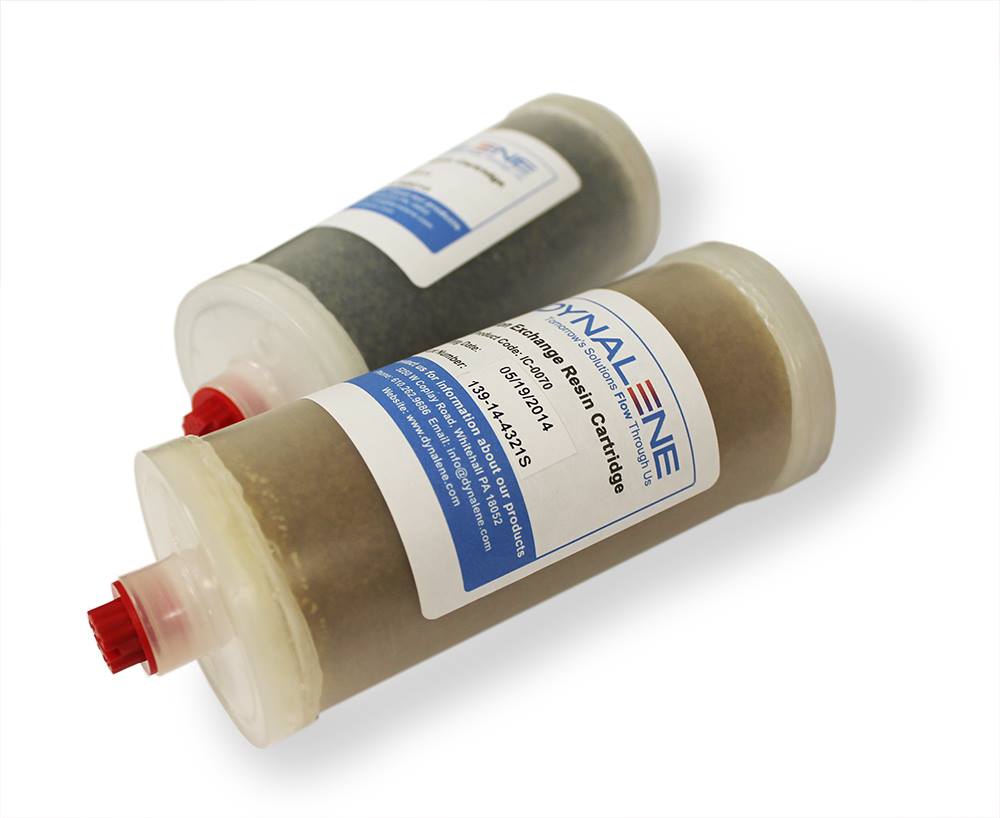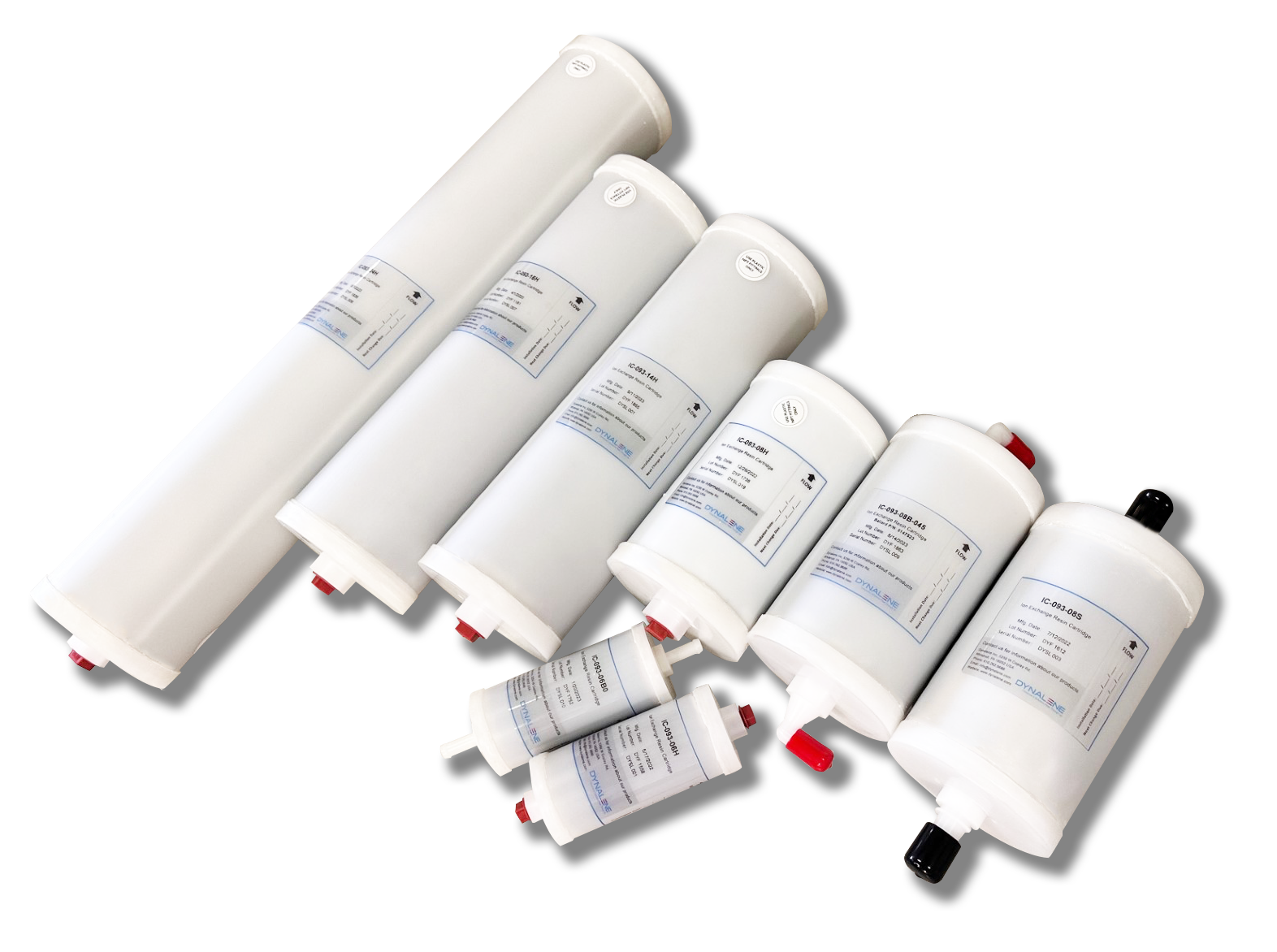Using a de-ionization (DI) cartridge (sometimes referred to as a DI filter or canister) with your low electrical conductivity glycol coolant fluid, such as Dynalene LC-EG, LC-PG and LC-Bio is important because it helps maintain the fluid’s low conductivity over time by continuously removing ions and impurities. Here’s why it’s essential:

Prevents Conductivity Increases
Over time, ions can enter the glycol through water contamination (if water is added to the glycol fluid), leaching from metal and plastic components, or fluid degradation. A DI cartridge removes both positive (cations) and negative (anions) ions, preventing increases in conductivity that can compromise system performance and/or increase the risk of an electrical short circuit and thermal run-away.
Protects Equipment from Corrosion
High ion concentrations in the fluid can lead to electrochemical reactions, causing corrosion in system components. The DI cartridge removes these ions, protecting your equipment from damage and reducing maintenance costs.
Extends Fluid Life
The DI cartridge removes the acidic byproducts from glycol degradation, thereby keeping the pH of the fluid close to neutral. This helps in extending the useful life of your heat transfer fluid.
Ensures Optimal Heat Transfer
Low-conductivity fluids are designed to provide stable and efficient heat transfer. Ions in the fluid can disrupt this balance by either reacting with the heat transfer surface or forming precipitates or scale build-up, reducing thermal efficiency. A DI cartridge ensures the fluid remains pure, maintaining its heat transfer properties.
Summary
Dynalene’s ion exchange processes provide a simple yet extremely effective way to improve the performance of natural gas dehydration systems, offering cost savings and operational benefits in the process.


